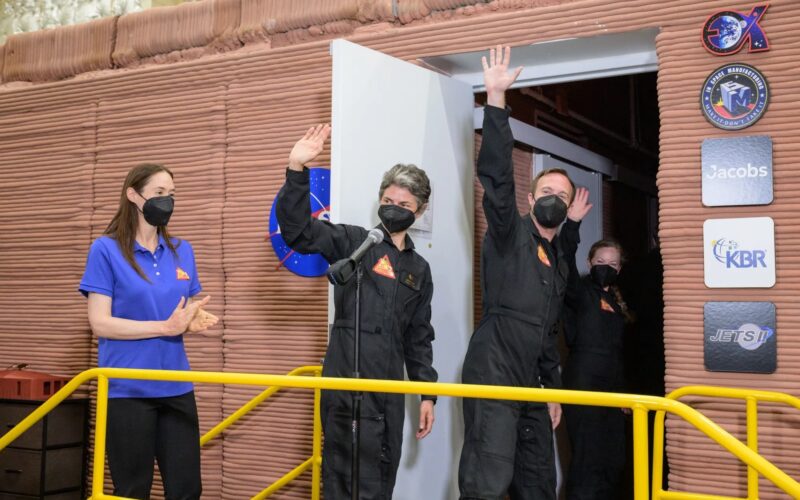The National Aeronautics and Space Administration (NASA) has set out the candidate criteria applicants will need if they want to take part in the next yearlong simulated Mars mission.
Despite the mission taking place entirely on Earth, candidates will still be required to have experience in the world of science or aviation.
NASA opened the application period on February 16, 2024, as it prepares for the second of three planned ground-based missions called CHAPEA (Crew Health and Performance Exploration Analog) to begin in spring 2025.
The simulated missions are designed to help guide NASA’s plans for human exploration of the Red Planet in years to come.
The first team to take up the mission on June 25, 2023, are already over 230 days into the project and are set to leave the simulation on July 26, 2024.
Each CHAPEA mission involves a four-person volunteer crew living and working inside a 1,700-square-foot, 3D-printed habitat based at NASA’s Johnson Space Center in Houston.
The habitat, called the Mars Dune Alpha, simulates the challenges of a mission on Mars, including resource limitations, equipment failures, communication delays, and other environmental stressors.
Those that take part will simulate spacewalks, robotic operations, habitat maintenance, exercise and crop growth.
‘Healthy and motivated’
To be considered for the next mission, NASA is searching for “healthy, motivated” United States (US) citizens or permanent residents.
Potential candidates must be non-smokers, 30-55 years of age and speak English proficiently for effective communication with colleagues.
“Applicants should have a strong desire for unique, rewarding adventures and interest in contributing to NASA’s work to prepare for the first human journey to Mars,” NASA said.
Crew selection will follow additional standard NASA criteria for astronaut candidate applicants.
A master’s degree in a STEM field such as engineering, mathematics, or biological, physical or computer science from an accredited institution with at least two years of professional STEM experience or a minimum of one thousand hours piloting an aircraft is required.
Candidates who have completed two years of work toward a doctoral program in science, technology, engineering, and mathematics, completed a medical degree, or a test pilot program will also be considered.
With four years of professional experience, applicants who have completed military officer training or a Bachelor of Science degree in a STEM field may be considered.
The deadline to complete your application on the NASA website is April 2, 2024.

